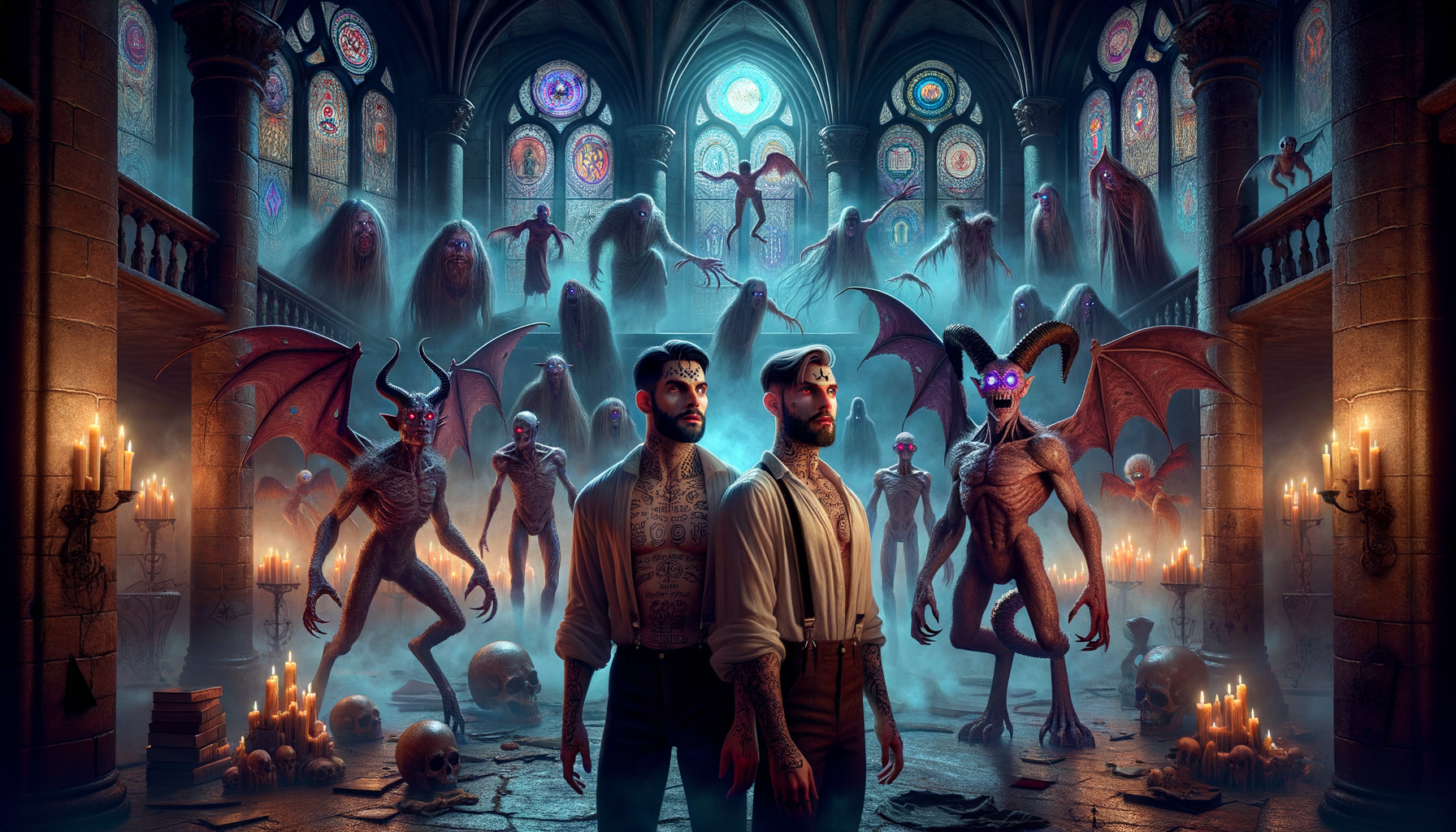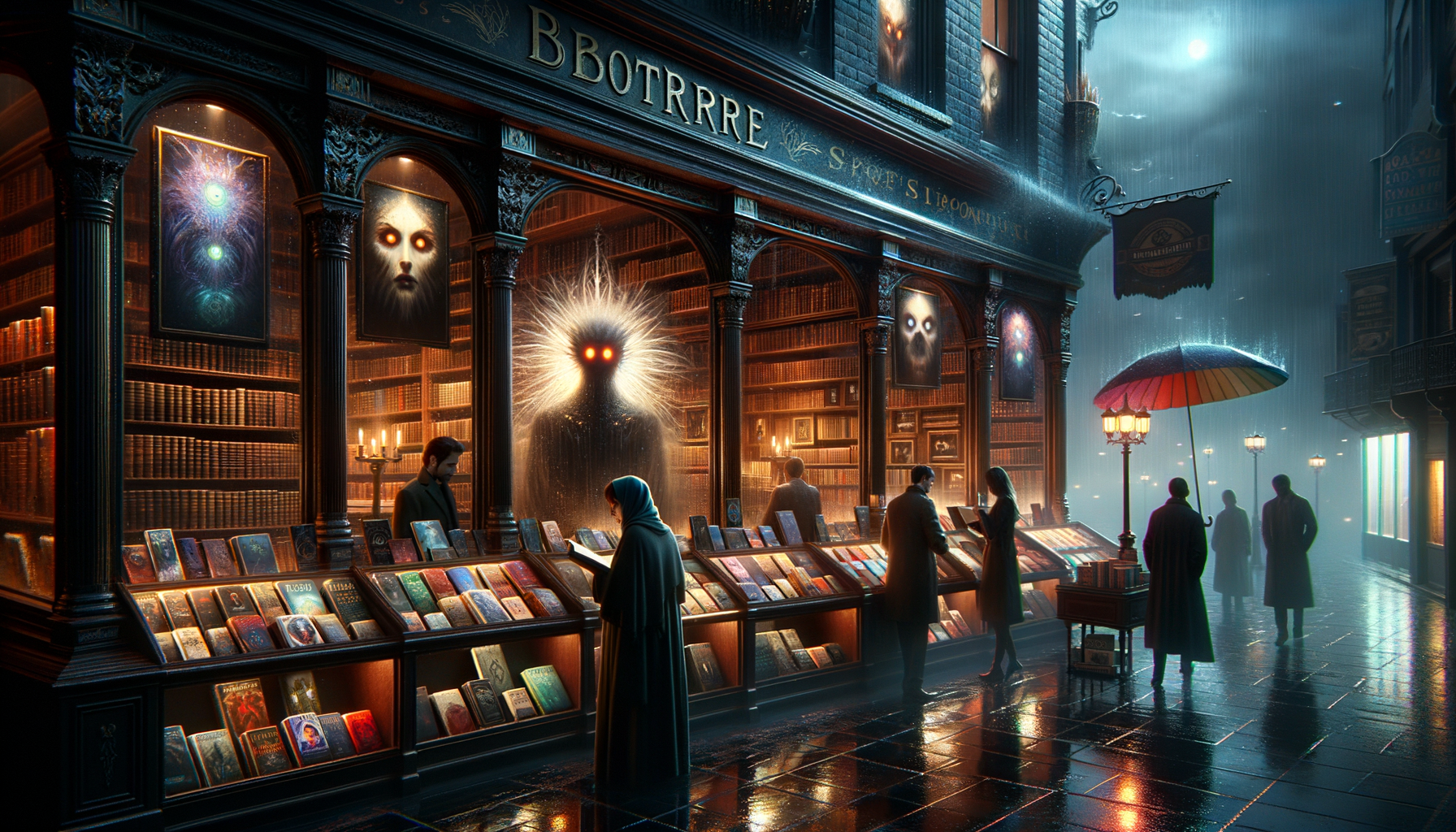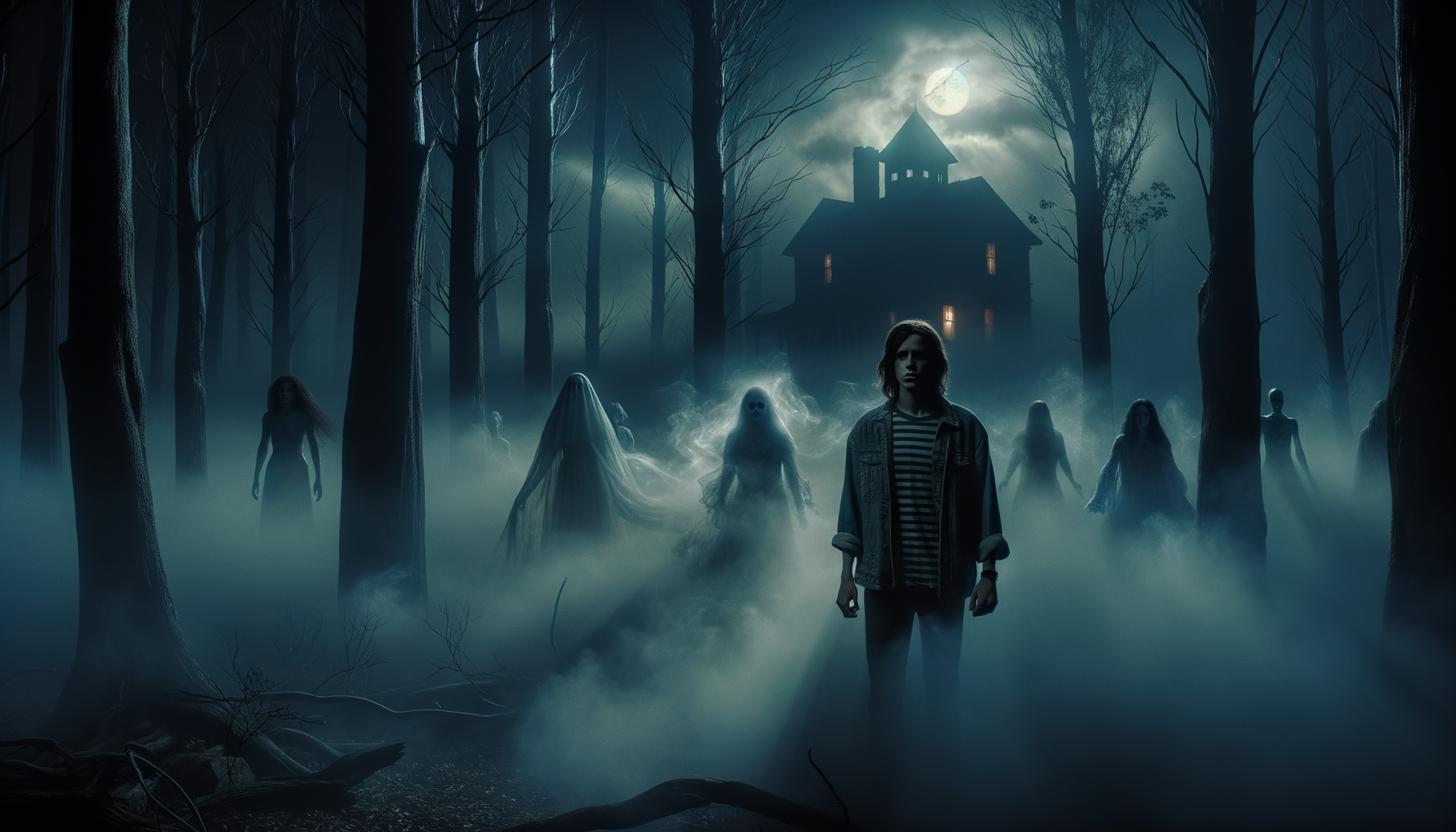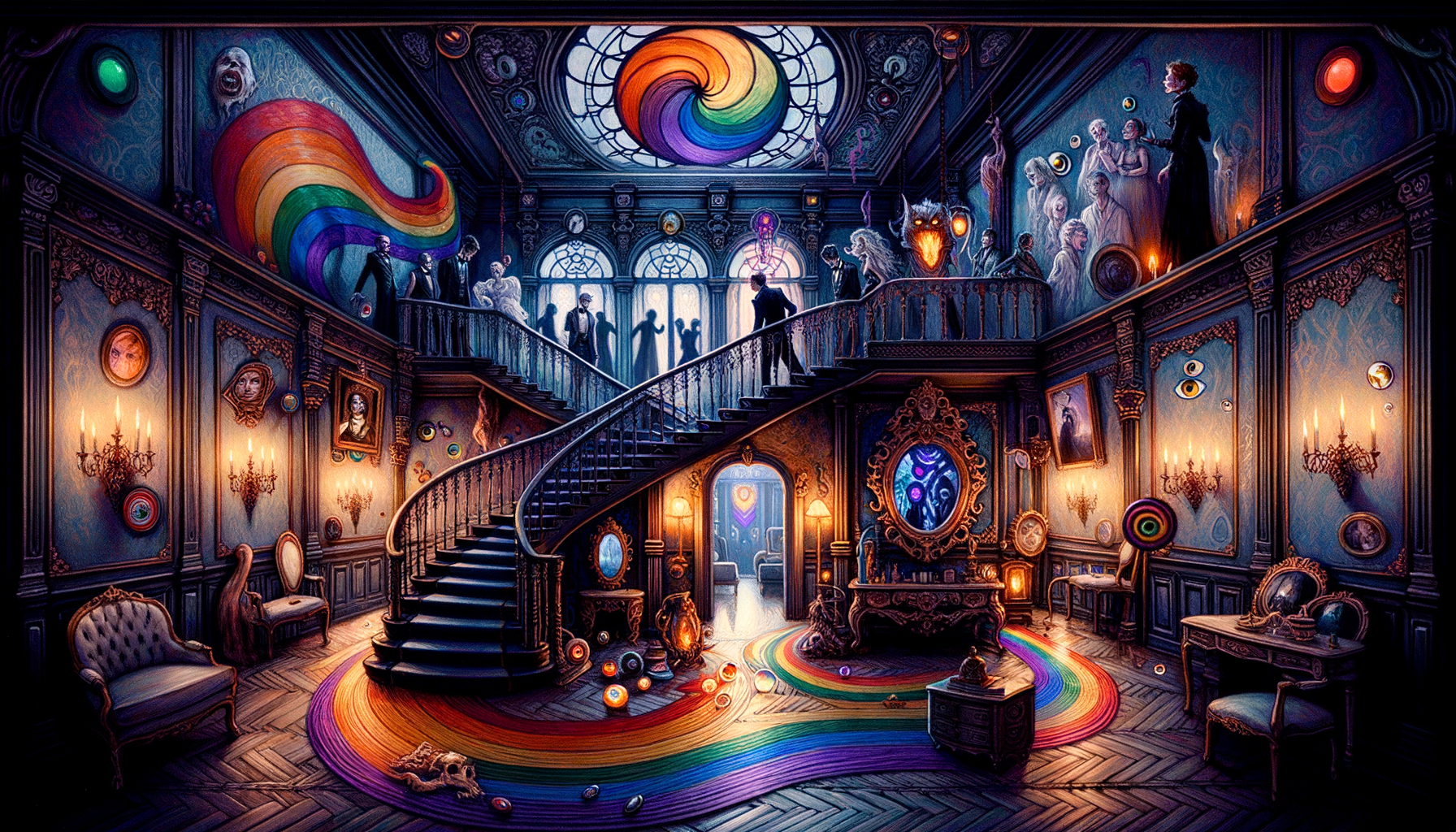Ever wondered how supernatural horror intertwines with LGBT themes, creating stories that are equal parts eerie and empowering? Well, you’re in for a treat (or should I say, a scare)! The realm of LGBT supernatural horror with a focus on demons is growing, providing both thrills and representation. In fact, did you know that the demand for diverse horror stories skyrocketed by 30% in the last year? Let’s explore how this fascinating genre is capturing the hearts and fears of many!
The Evolution of LGBT Supernatural Horror
Brief History of LGBTQ+ Representation in Horror
LGBTQ+ representation in horror has undergone significant transformation over the years. In early horror films and literature, queer characters were often depicted as villains or tragic figures, reinforcing negative stereotypes. However, as societal attitudes began to shift, so did the portrayal of LGBTQ+ individuals. By the late 20th century, horror started to include more nuanced and sympathetic queer characters, reflecting the growing acceptance and understanding of LGBTQ+ communities.
Milestones in Incorporating Supernatural Elements
Incorporating supernatural elements into LGBT horror narratives has added layers of complexity and depth to the genre. One of the early milestones was the introduction of explicitly queer characters in supernatural settings, which allowed for exploration of themes like identity, otherness, and societal exclusion. Over time, these stories began to integrate more sophisticated supernatural elements, such as ghosts, witches, and, notably, demons, to mirror the internal and external conflicts faced by LGBTQ+ individuals.
How Modern Stories are Blending Horror with Inclusivity
Modern horror stories are pushing the boundaries by blending traditional horror elements with inclusive narratives. These tales often feature LGBTQ+ protagonists who are not defined solely by their sexuality or gender identity but are complex characters facing supernatural challenges. This blending of horror with inclusivity helps to normalize LGBTQ+ experiences while providing a fresh take on the genre. The result is a richer, more diverse tapestry of stories that resonate with a broader audience.
Demons as Symbolic Figures in LGBT Narratives
The Traditional Role of Demons in Folklore and Horror
Traditionally, demons have been portrayed as malevolent beings that embody evil and chaos. In folklore and horror, they often serve as antagonists that challenge the moral and spiritual fortitude of the protagonists. Their roles have ranged from tempters and corrupters to punishing entities, symbolizing the ultimate otherness and fear of the unknown.
Demonic Characters as Metaphors for Societal Struggles
In LGBT narratives, demonic characters often serve as powerful metaphors for societal struggles. They can represent the internal demons that LGBTQ+ individuals face, such as self-doubt, internalized homophobia, and the fear of rejection. Additionally, these characters can symbolize external societal pressures, such as discrimination, prejudice, and violence. By personifying these struggles, demonic figures in LGBT horror provide a cathartic outlet for exploring and confronting these issues.
Queer Allegories and Subtexts in Demon-Related Stories
Queer allegories and subtexts are prevalent in demon-related LGBT horror stories. These narratives frequently use demonic possession or transformation as metaphors for the coming-out experience or the journey towards self-acceptance. The struggle between human and demonic identities can reflect the conflict between societal expectations and personal authenticity. Through these stories, writers can address complex themes of identity, acceptance, and resistance in a way that resonates deeply with LGBTQ+ audiences.
Must-Read LGBT Supernatural Horror Books Featuring Demons
A Curated List of Groundbreaking Novels
Here are some groundbreaking novels that have made significant contributions to the LGBT supernatural horror genre:
- “The Devourers” by Indra Das
- “Carmilla” by Sheridan Le Fanu
- “The Gilda Stories” by Jewelle Gomez
- “The Luminous Dead” by Caitlin Starling
- “Summer Sons” by Lee Mandelo
Summaries and Themes of Each Book
- “The Devourers” by Indra Das: This novel explores themes of identity and transformation through the lens of shape-shifting beings. It delves into the fluidity of gender and sexuality, making it a compelling read for those interested in supernatural horror with a queer twist.
- “Carmilla” by Sheridan Le Fanu: One of the earliest vampire tales, “Carmilla” features a strong lesbian subtext. The story examines themes of forbidden love and the monstrous feminine.
- “The Gilda Stories” by Jewelle Gomez: This book follows an African-American lesbian vampire through centuries, exploring themes of immortality, community, and resilience.
- “The Luminous Dead” by Caitlin Starling: A psychological horror novel set in a claustrophobic cave system, it features a complex relationship between two women, highlighting themes of trust and survival.
- “Summer Sons” by Lee Mandelo: This Southern Gothic novel blends horror with a queer coming-of-age story, addressing themes of grief, identity, and the supernatural.
Why These Books are Essential Reads in 2024
These books are essential reads in 2024 because they offer fresh perspectives and diverse voices in the horror genre. They challenge traditional narratives and provide representation for LGBTQ+ individuals, making the genre more inclusive and reflective of contemporary society. Moreover, they push the boundaries of horror literature, blending supernatural elements with deep, thought-provoking themes.
Movies and TV Shows That Bring LGBT Demon Horror to Life
Overview of Popular Films and Series
Several movies and TV shows have successfully brought LGBT demon horror to life, captivating audiences with their unique blend of fear and representation. Notable examples include:
- “The Haunting of Bly Manor”
- “Bit”
- “Hellbent”
- “What Keeps You Alive”
- “Sense8”
Character Analysis and LGBT Representation
- “The Haunting of Bly Manor”: This series features a poignant love story between two women, Dani and Jamie, set against the backdrop of a haunted estate. The show skillfully intertwines horror with themes of love, loss, and identity.
- “Bit”: This film follows a transgender teenager who joins a gang of queer feminist vampires. It addresses themes of empowerment, identity, and community within a horror framework.
- “Hellbent”: Often hailed as the first gay slasher film, it centers on a group of friends being stalked by a killer during Halloween. The film is notable for its unapologetic representation of gay characters.
- “What Keeps You Alive”: A psychological thriller that explores the dark side of a lesbian relationship, delving into themes of trust, betrayal, and survival.
- “Sense8”: Although not strictly horror, this series includes supernatural elements and features a diverse cast of LGBTQ+ characters. It explores themes of connection, identity, and resistance against oppressive forces.
Critiques and Audience Reception
These films and series have generally received positive reception for their representation of LGBTQ+ characters and their innovative approach to horror. Critics have praised their ability to blend traditional horror elements with contemporary social issues, creating stories that are both terrifying and thought-provoking. Audience reception has also been favorable, with many viewers appreciating the increased visibility and complexity of LGBTQ+ characters in horror media.
The Impact of LGBT Supernatural Horror on the Genre
Shifts in Audience Demographics and Preferences
The rise of LGBT supernatural horror has led to notable shifts in audience demographics and preferences. There is a growing demand for horror stories that reflect diverse experiences and perspectives. This shift is not only attracting LGBTQ+ audiences but also appealing to a broader range of viewers who seek more inclusive and varied narratives.
How These Stories Challenge Genre Norms
LGBT supernatural horror challenges genre norms by breaking away from traditional tropes and stereotypes. These stories often subvert expectations, presenting LGBTQ+ characters as heroes rather than victims or villains. They also explore complex themes such as identity, acceptance, and resistance, adding depth and richness to the genre. By doing so, they push the boundaries of what horror can be, making it more inclusive and reflective of contemporary society.
Future Trends and Predictions for LGBT Horror
Looking ahead, the future of LGBT horror appears promising. We can expect to see more stories that blend supernatural elements with inclusive narratives, offering fresh perspectives and diverse voices. There is likely to be an increase in the representation of LGBTQ+ characters in horror media, both in literature and on screen. Additionally, as societal attitudes continue to evolve, these stories will play a crucial role in challenging and reshaping the horror genre, making it more inclusive and reflective of the world we live in.
Conclusion
The world of LGBT supernatural horror is as rich as it is terrifying. With demonic tales offering complex metaphors and thrilling narratives, it’s no wonder this genre is on the rise. So, why not grab a book or find a movie to experience the chills yourself? Don’t miss out on what’s becoming a cornerstone of modern horror. Happy haunting!




